Does Hibiscus Like Acidic Soil? pH Range & FAQs
-
Lindsey Lawson
- Last updated:
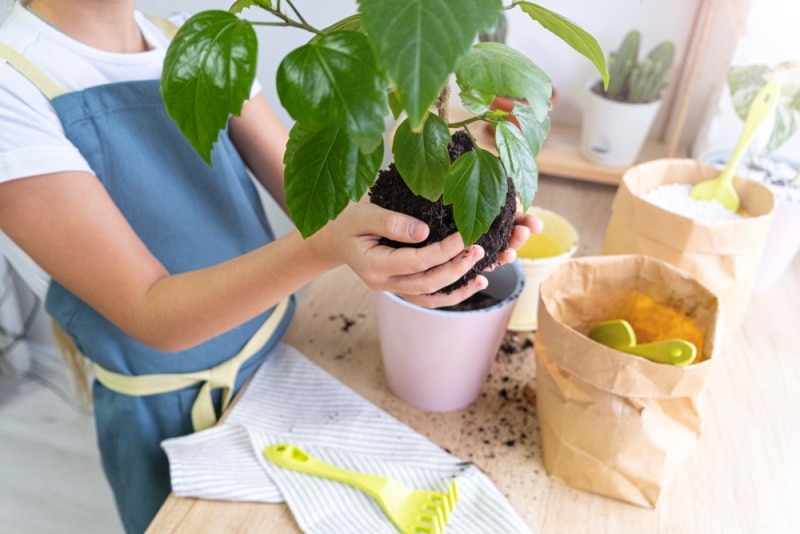
The beautiful, vibrant hibiscus is very popular as both a houseplant and an addition to summer gardens. They are not nearly as hardy as some other plants so it is important to know their specific care requirements so that you can enjoy their beauty for as long as possible
The hibiscus does prefer slightly acidic soil and can grow well in a pH range between 5.5 and 7.0. Gardeners like to keep their pH between a more specific range of 6.5 and 6.8 for ideal growing conditions. In this article, we’ll go over more about the care requirements for these charming plants and why the pH is so important.
What Is pH?
To put it simply, pH is a measurement of the concentration of hydrogen ions in water. It is described as being alkaline when the measurement is above 7, neutral when the measurement is right at 7, and low or acidic when less than 7. Different plants have different pH requirements and if it is outside the needed range, issues with plant health can occur.
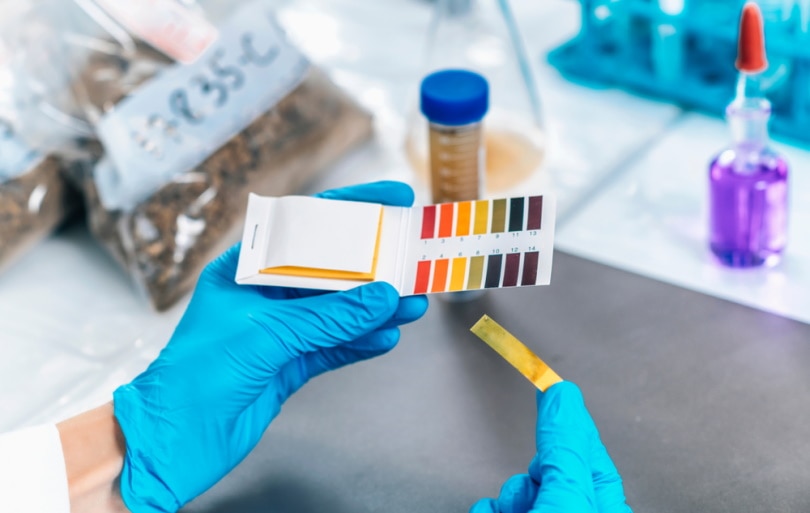
How Does pH Affect Plants?
Soil pH affects the solubility of minerals and other nutrients. 14 of the 17 essential plant nutrients are obtained from the soil. Before a plant can utilize minerals and nutrients, they must first be dissolved in the soil solution. The majority of these nutrients are more soluble and available in acidic soil than in neutral or slightly alkaline soils.
About the Hibiscus
The hibiscus is a genus of flowering plants of the mallow family that is made up of nearly 300 species of trees, shrubs, perennials, and annuals. They are native to warm tropical regions throughout the world and are far from cold hardy.
Hibiscus rosa-sinensis is the most common hibiscus species available throughout the United States. These plants are bred specifically for their vibrant colors and flower size.
Caring for a Hibiscus
Choosing the Right Soil
Hibiscus grows best in rich, well-draining soil that is slightly acidic. A mixture of two parts potting soil, two parts peat moss, and one part either perlite or vermiculite is generally recommended as the best combination for successful growth.
Since these plants are heavier feeders, they will need a balanced fertilizer of 20-20-20 or 10-10-10. You should use at half of the recommended label strength about every 2 to 3 weeks for outdoor summer plants.
If your hibiscus is indoors, it can be fertilized less often. You should use about half the strength of the recommended formulation once a month during the spring and summer and less frequently during the winter months.
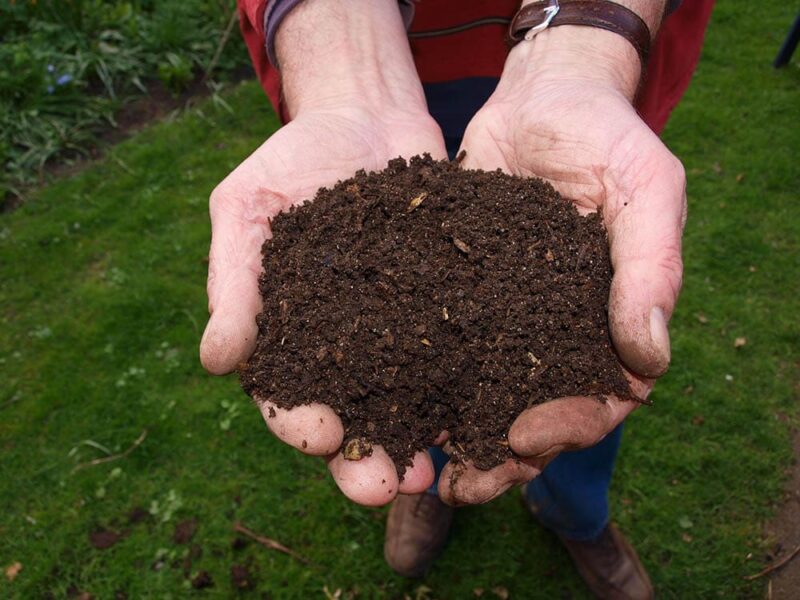
Watering Requirements
A hibiscus’ soil should be kept moist but not saturated. It should never be allowed to dry out completely, as this will quickly lead to wilting. For potted hibiscus, you should make sure the pot has proper drainage holes so that the bottom roots are watered thoroughly and any excess water can drain out. When winter time hits, you can water less often and allow the soil to dry out just a bit more in between watering.
Lighting Requirements
Hibiscus will need access to at least 4 to 5 hours of direct, bright light to thrive and bloom well as an indoor plant. The more light they receive, the better they bloom regardless of whether they are indoors or outdoors.
They can greatly benefit by being placed outdoors to get natural sunlight each day after the risk of frost has passed. They will need to be acclimated to these brighter conditions, so slowly build them up to outdoor sun exposure over time. When the fall hits, it will be time to move the hibiscus indoors to a well-lit area that gets plenty of sunlight.

Temperature and Humidity Requirements
Hibiscus is not a cold hardy plant and it cannot tolerate cold temperatures. Since they are native to warmer climates, they will require warmer conditions for their flower buds to develop.
They should be grown indoors in a warm, sunny location in temperatures between 65° to 75°F and never lower than 55°F.
If this plant is kept in too cold conditions, the buds may fail to form or may drop off if they have already begun growing. It is also important to note that hibiscus also cannot withstand extreme changes in weather, temperature, or humidity.
If your plant is indoors, keep them away from any areas that get a heavy draft. It’s a good idea to mist your plant about once per week to keep their humidity levels stable.
Propagation
Cuttings are the best way to propagate the hibiscus. It is recommended that you take 3 to 5-inch cuttings from the strongest shoots. Dip the cut ends in a rooting hormone mixture and stick them in a small pot filled with potting mix.
Keep this in a well-lit area and ensure it gets enough moisture. It will take about 3 to 5 weeks for a root system to properly develop and be ready for transplant. To encourage bushiness, cut or pinch off an inch of the stem to just above a leaf node once the cutting has rooted.
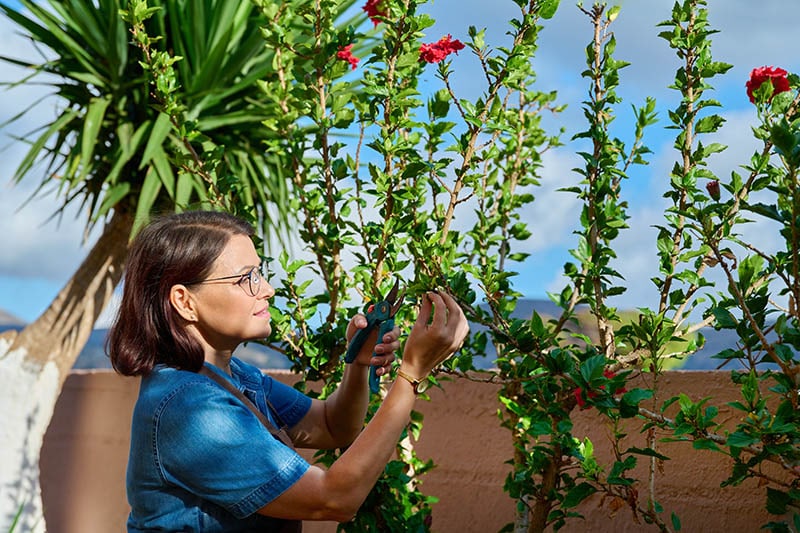
Pest and Disease Concerns
Like any household plant, the hibiscus can fall victim to pests and disease. Most often, disease is the result of bacteria, fungi, or improper care. These plants most often suffer from wilting, yellowing leaves, bud dropping, and root rot. The best way to thwart pets and disease is by keeping up with optimal environmental conditions.
- Japanese beetles
- Aphids
- Spider mites
- Whiteflies
- Thrips
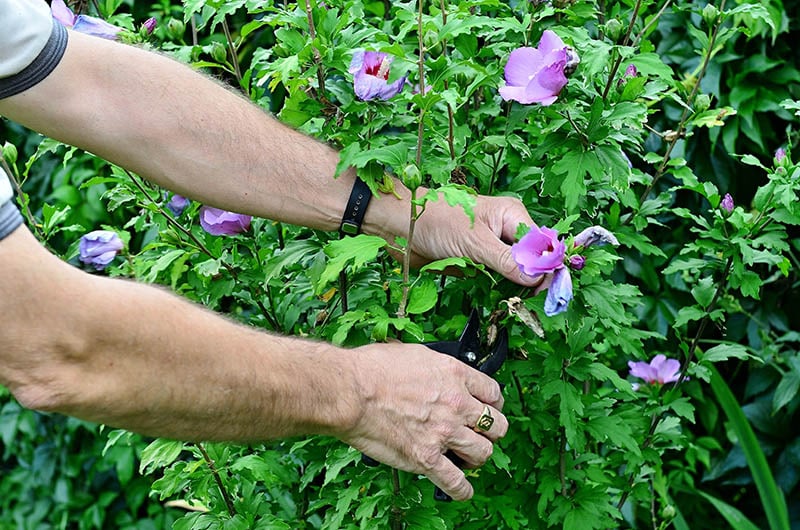
Final Thoughts
Hibiscus thrives best in slightly acidic soil between 5.5 and 7.0. Those that specialize in these plants recommended keeping the soil pH around 6.5 to 6.8 for optimal plant health. Proper pH allows your hibiscus to properly absorb the much-needed mineral and nutrients to produce those gorgeous, vibrant blooms.
Featured Image Credit: Natalia Duryagina, Shutterstock
Contents
